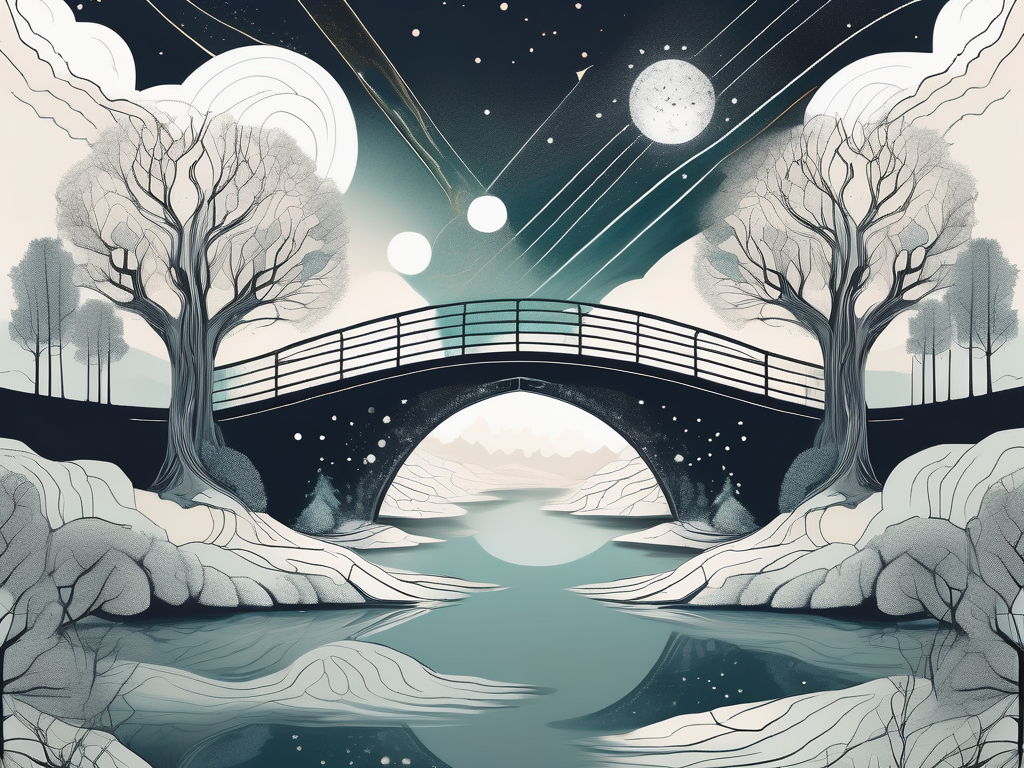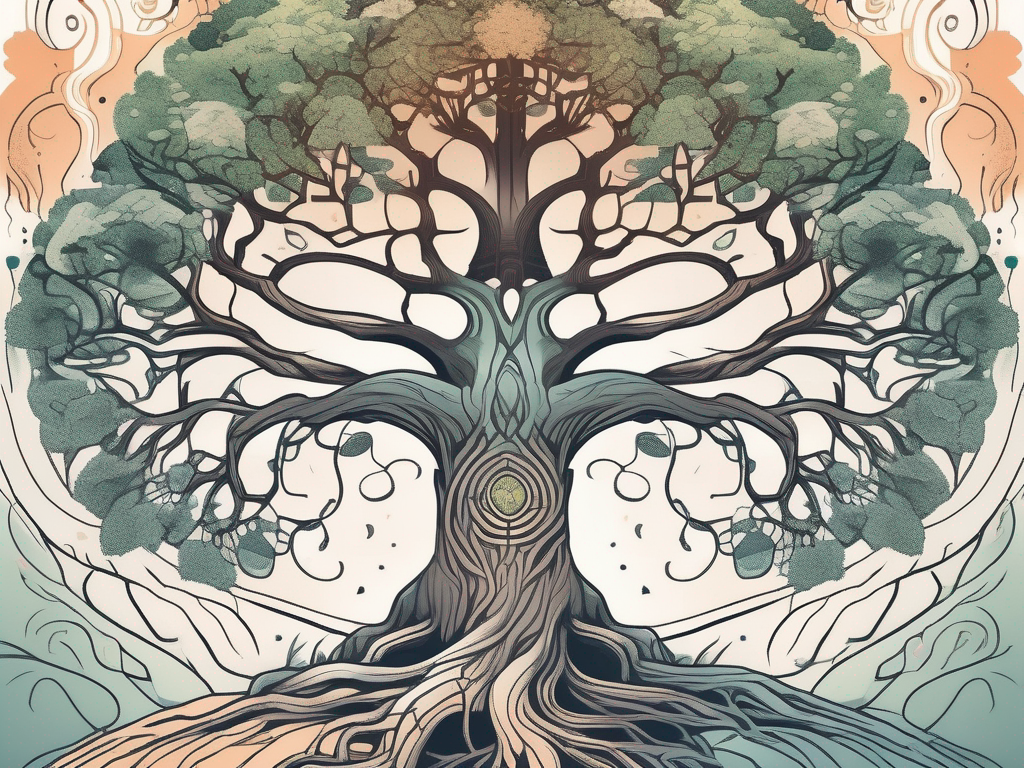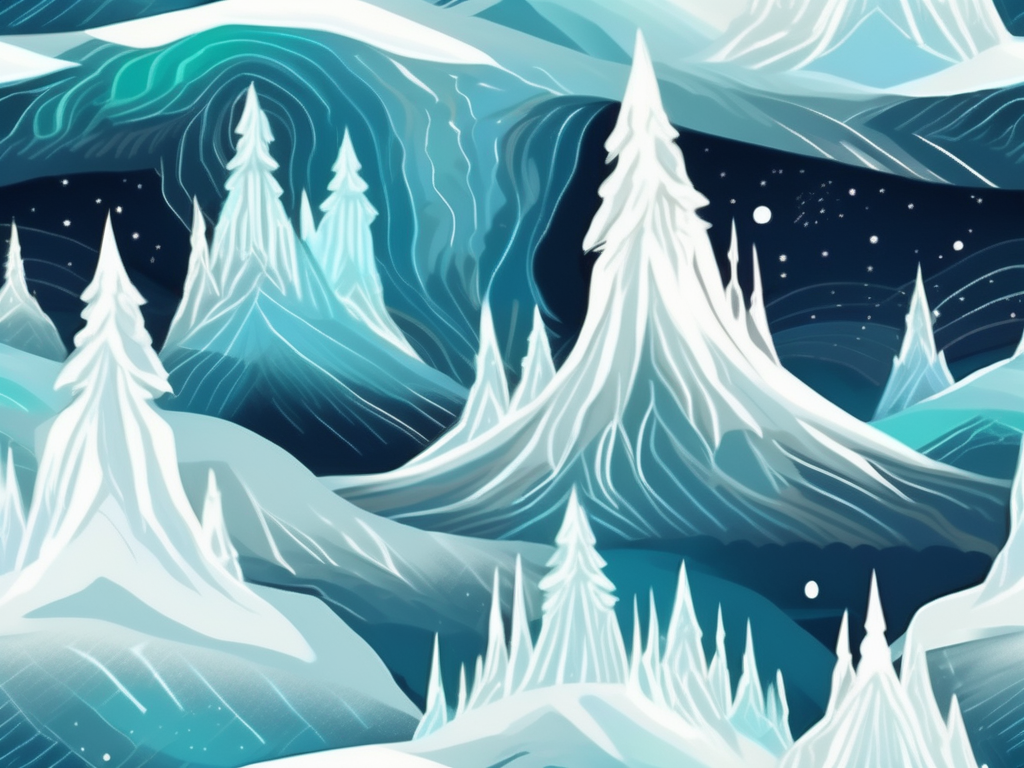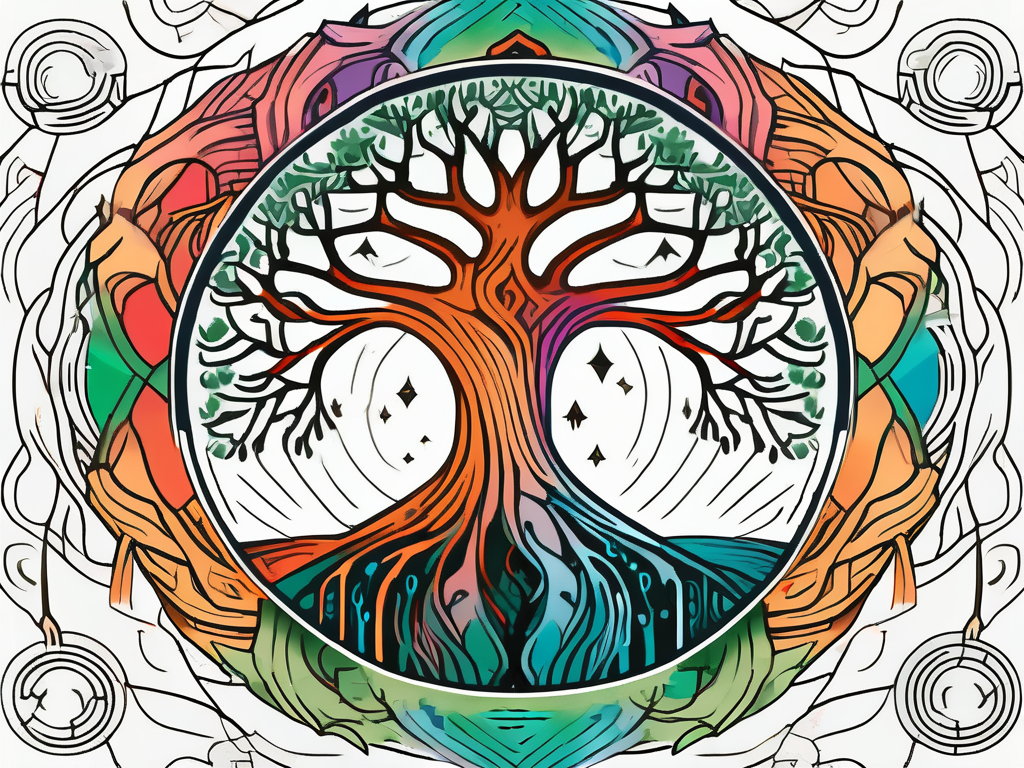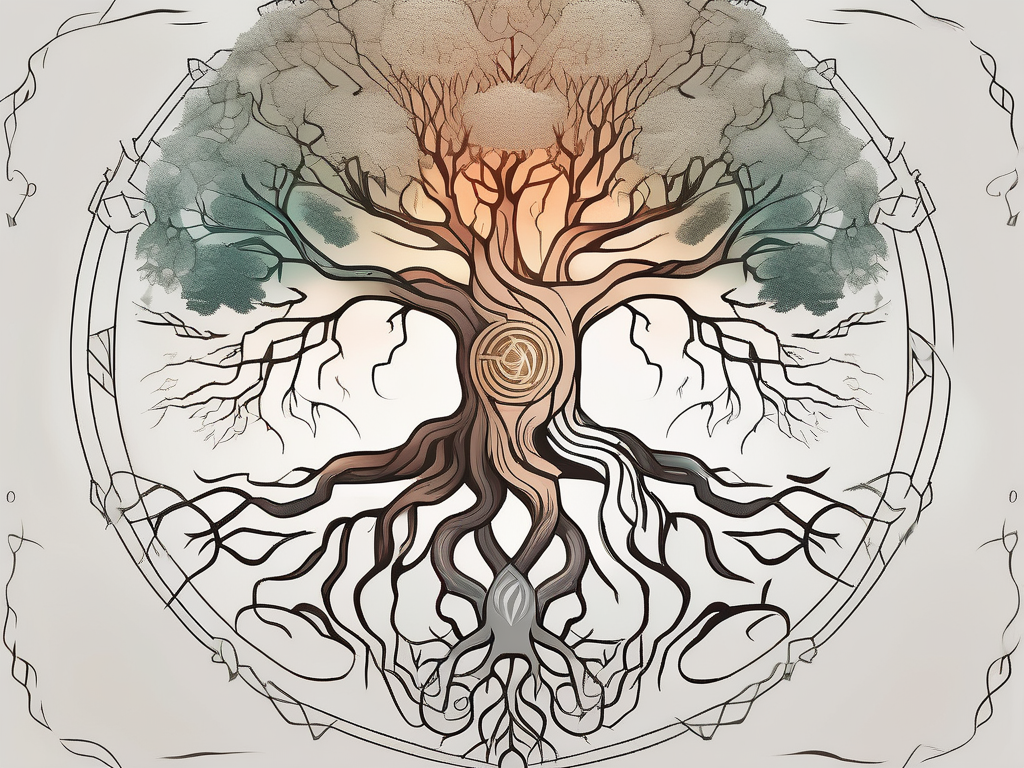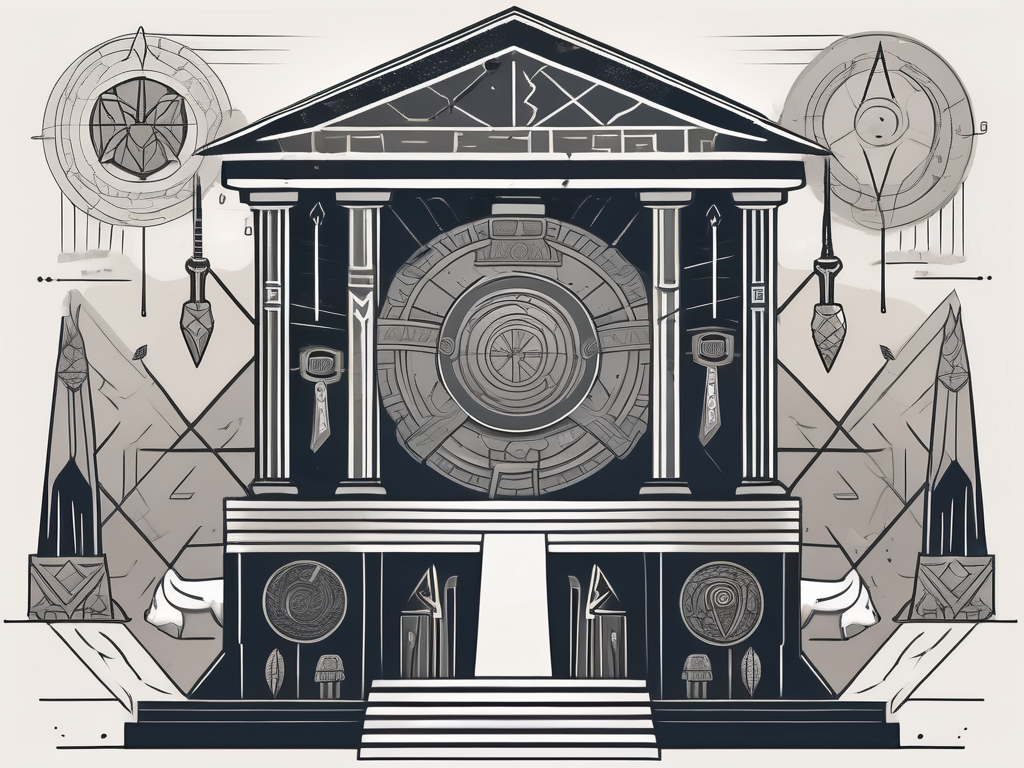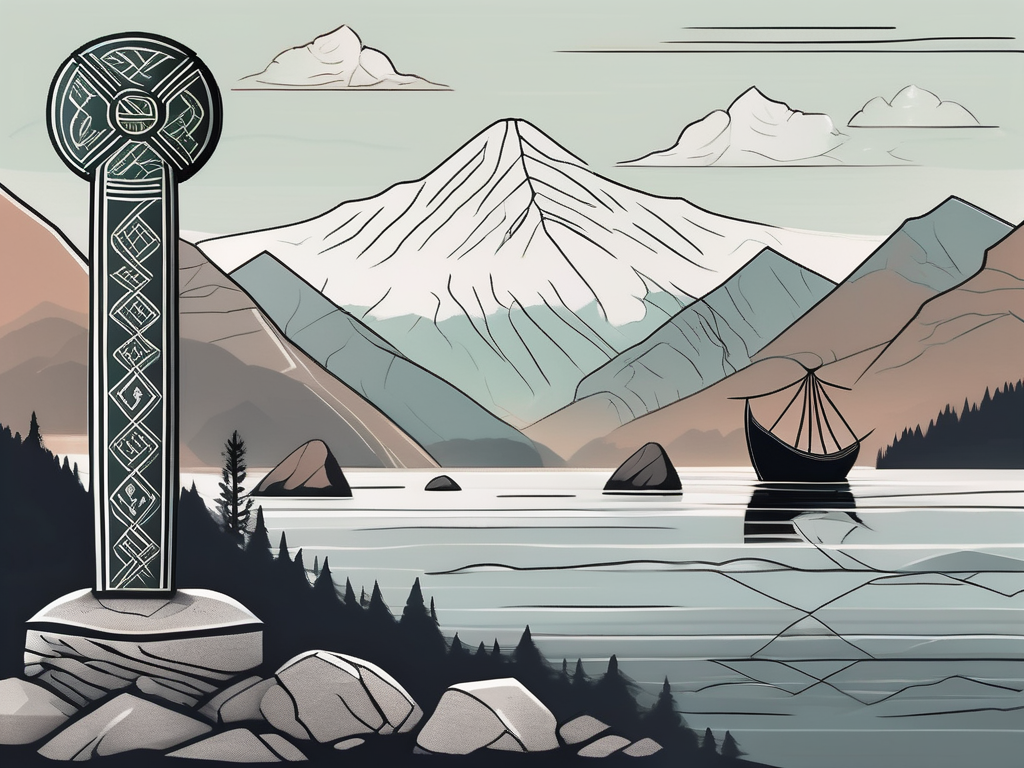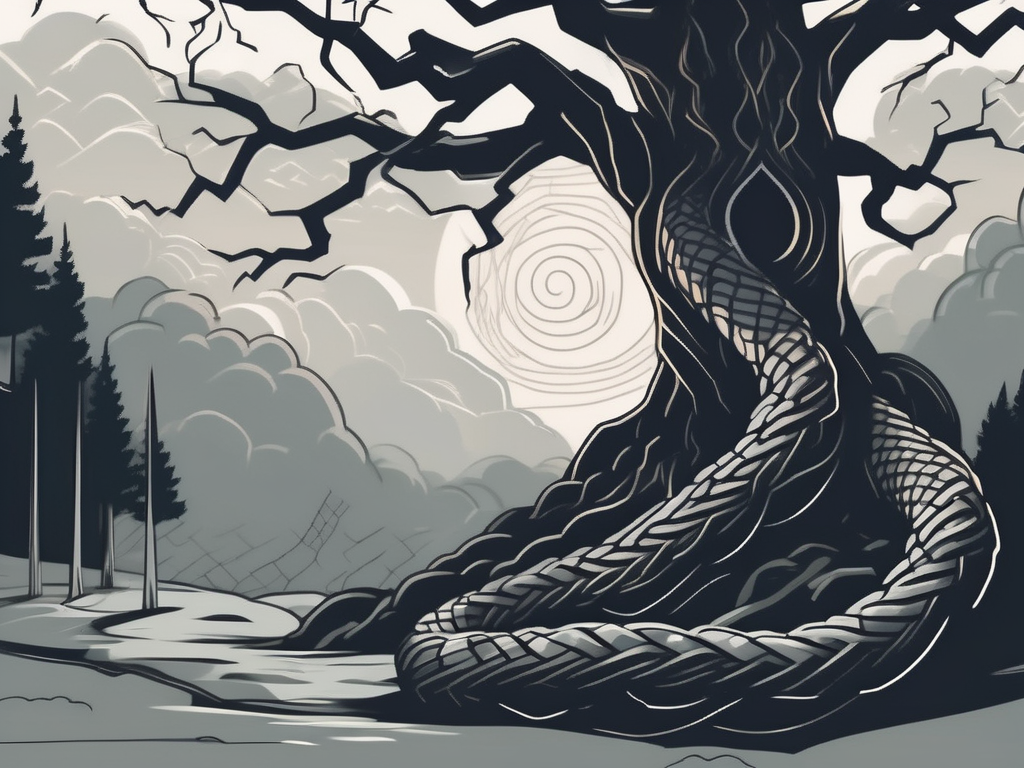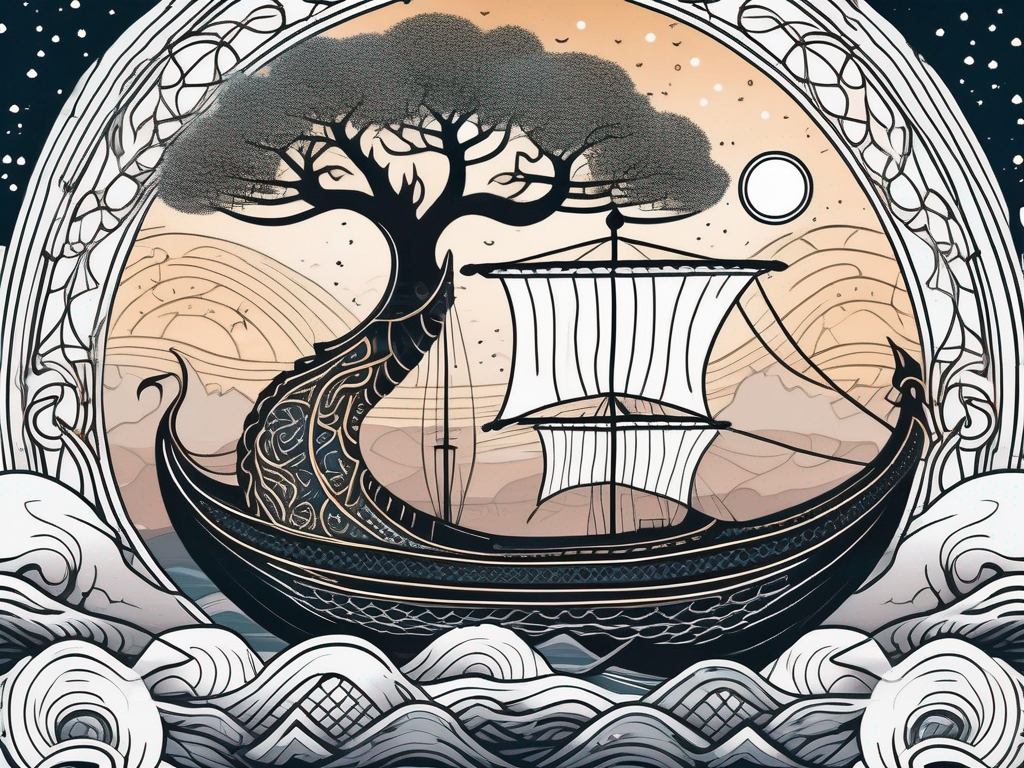Norse mythology is a subject that has captivated the minds of people for centuries. The tales of gods, giants, and mythical beings from the Viking Age have been passed down through generations, providing us with a glimpse into the beliefs and customs of the ancient Norse people. In this article, we will delve into the intriguing concept of afterlife in Norse mythology, uncover the different realms and entities that play a role in it, and explore its influence on modern culture.
Understanding Norse Mythology
Before we venture into the world of Norse afterlife, it is essential to have a basic understanding of Norse mythology itself. The origins and influence of Norse mythology are fascinating, as it dates back to the pre-Christian era of the Nordic people. Its tales were passed down orally, ensuring that they were preserved and shared across generations. These stories and beliefs continue to captivate and inspire people to this day.
Norse mythology hails from the Scandinavian region, primarily Norway, Sweden, and Denmark. Because of their seafaring nature, the Norse people spread their mythological beliefs throughout Europe and other regions they explored. The stories of gods, heroes, and creatures have significantly influenced various aspects of Western culture, including literature, art, and even modern fantasy genres like Tolkien’s Middle-earth.
The rich tapestry of Norse mythology is woven with key concepts and beliefs that shape its unique narrative. Central to this mythology is a pantheon of gods and goddesses who reside in different realms and have their unique roles and attributes. These deities, known as the Æsir and Vanir, are not invincible or perfect beings but rather display human-like qualities. This adds depth to the stories and makes them relatable to mortals.
One of the most well-known gods in Norse mythology is Odin, the Allfather and ruler of Asgard. Odin is a complex figure, associated with wisdom, war, and magic. He is often depicted as a wise old man with a long beard, wearing a wide-brimmed hat and carrying a spear. Odin’s thirst for knowledge led him to sacrifice one of his eyes in exchange for a drink from the Well of Wisdom, gaining immense wisdom and foresight.
Another prominent figure in Norse mythology is Thor, the god of thunder and son of Odin. Thor is known for his immense strength and his mighty hammer, Mjölnir, which he uses to protect both gods and mortals from the forces of chaos. He is often portrayed as a burly, red-bearded warrior, wielding his hammer with great power and determination.
One cannot explore Norse mythology without encountering Loki, the trickster god. Loki is a shape-shifter and a master of deception, often causing mischief and chaos among the gods. Despite his mischievous nature, Loki is also a complex character who occasionally aids the gods with his cunning and intelligence.
These are just a few examples of the gods and goddesses that populate the rich tapestry of Norse mythology. Each deity has their own unique stories, adventures, and relationships with other gods and mortals. The tales of Norse mythology are not only entertaining but also provide insights into the values, beliefs, and worldview of the ancient Norse people.
The Concept of Afterlife in Norse Mythology
Death and the afterlife are integral aspects of any mythological system, and Norse mythology is no exception. In Norse belief, the afterlife is not just a single realm but a multifaceted concept consisting of various realms that cater to different types of deceased individuals.
The Norse afterlife is a rich tapestry of realms and journeys, each with its own unique characteristics and purpose. It is a reflection of the complex worldview of the ancient Norse people, who believed in the interconnectedness of life and death, and the importance of honor and bravery.
The Different Realms of the Norse Afterlife
According to Norse mythology, there are several realms where souls can find themselves after death. The most well-known among them is Valhalla, the hall of the slain, ruled by Odin, the Allfather. Valhalla is a realm reserved specifically for those who died in battle, bravely fighting for their people. It is a place of eternal glory and honor, where the chosen warriors, known as Einherjar, engage in glorious battles during the day and feast in the Great Hall at night.
But Valhalla is not the only realm in the Norse afterlife. There are other realms that cater to different types of deceased individuals. One such realm is Helheim, the land of the dead. Hel, the daughter of Loki, reigns over this realm. Helheim is a place for those who died of old age, illness, or natural causes. Unlike Valhalla, Helheim is not a place of eternal glory but rather a neutral realm where the souls experience a peaceful existence. It is a realm of rest and reflection, where the souls can find solace and healing after the trials of life.
Another realm in the Norse afterlife is Folkvangr, the field of the people. This realm is ruled by the goddess Freyja, who welcomes half of the fallen warriors to her domain. Folkvangr is a place of beauty and abundance, where the souls of fallen warriors can find joy and fulfillment in the afterlife.
There are also realms like Niflheim, the realm of ice, and Muspelheim, the realm of fire, which are not specifically designated for the deceased but are part of the larger cosmology of Norse mythology. These realms represent the primordial forces of creation and destruction, and their presence in the afterlife underscores the cyclical nature of existence.
The Journey of the Soul After Death
In Norse mythology, the journey of the soul does not end with mere arrival in one of the realms. The deceased must undertake a treacherous path to reach their final destination. Guided by the Norns, the fates, the souls navigate through dark and perilous landscapes that test their courage and integrity. The journey requires passing through rivers, crossing the rainbow bridge, and facing numerous challenges, all in pursuit of finding their rightful place in the afterlife.
One of the most significant challenges on the soul’s journey is crossing the river Gjöll, which separates the realm of the living from the realm of the dead. This river is said to be filled with icy waters and guarded by the giantess Móðguðr, who tests the souls before allowing them to pass. Only those who have lived honorable lives and have the strength to face their past deeds can cross the river and continue on their journey.
Once the soul has crossed the river, they must then traverse the rainbow bridge Bifröst, which connects the realm of the living, Midgard, to the realm of the gods, Asgard. This bridge is said to be fragile and guarded by the god Heimdall, who ensures that only worthy souls can pass. The crossing of Bifröst is a symbolic representation of the soul’s transition from the mortal realm to the divine realm, where they will find their ultimate destiny.
Throughout the journey, the souls are accompanied by the Norns, the three goddesses of fate. These powerful beings weave the tapestry of destiny and guide the souls on their path. They are the arbiters of fate, determining the course of each individual’s afterlife based on their actions and choices in life.
As the souls navigate through the various challenges and obstacles, they not only face external trials but also confront their own inner demons and regrets. The journey becomes a transformative experience, where the souls must confront their past actions and come to terms with their own mortality. It is a journey of self-discovery and redemption, where the souls have the opportunity to find peace and fulfillment in the afterlife.
In conclusion, the concept of afterlife in Norse mythology is a complex and multifaceted one. It encompasses a variety of realms and journeys, each with its own purpose and significance. The Norse afterlife is not just a final destination but a transformative experience, where the souls must face their past and find their rightful place in the cosmic order. It is a reflection of the ancient Norse belief in the interconnectedness of life and death, and the importance of honor and bravery in the face of mortality.
The Gods and Their Roles in the Afterlife
The gods in Norse mythology hold significant influence over the realms of the afterlife. Two prominent figures associated with this domain are Odin and Hel.
Odin: The Ruler of Valhalla
Odin, the chief of the Norse gods, is closely associated with the afterlife. As the ruler of Valhalla, he resides in his magnificent hall, welcoming fallen warriors who demonstrate bravery and valor on the battlefield. Odin’s role is to prepare an army for the impending Ragnarok, the apocalyptic battle between gods and giants.
Hel: The Goddess of the Underworld
Hel is another vital deity linked to the afterlife in Norse mythology. As the daughter of Loki, she presides over Helheim, where souls find solace after death. Hel’s domain is not a place of punishment but rather a realm of rest and peacefulness, where souls can enjoy a harmonious existence.
Symbolism and Rituals Associated with Death and Afterlife
Death and the afterlife play crucial roles in any culture, and the Norse were no exception. This section explores the symbolism and rituals associated with death and the journey beyond.
Funeral Rites and Burial Customs
In Norse society, funeral rites were elaborate and held great significance. It was believed that proper burial customs and rituals ensured a smooth transition for the deceased into the afterlife. These customs often involved cremation, burial in ships or mounds, and placement of valuable possessions or offerings with the departed.
Symbols and Artifacts Related to the Afterlife
Various symbols and artifacts tied to the afterlife have been found in archaeological discoveries related to Norse culture. These include intricate metalwork, jewelry, and carvings that depict gods, mythical creatures, and scenes from Norse mythology. These artifacts provide a valuable insight into the beliefs and customs associated with the afterlife.
The Influence of Norse Afterlife Beliefs on Modern Culture
Norse mythology still holds a significant place in popular culture and continues to inspire and captivate audiences around the world. This section explores the influence of Norse afterlife beliefs on various aspects of modern society.
Norse Mythology in Literature and Popular Culture
Norse mythology and its rich afterlife concept have become popular themes in literature and entertainment. Countless books, movies, and TV shows draw inspiration from Norse mythology, weaving tales of gods, heroes, and epic battles from realms beyond our own.
Modern Interpretations and Misconceptions of the Norse Afterlife
With the growing interest in Norse mythology, there has been a surge in modern interpretations of Norse afterlife beliefs. However, it is crucial to separate fact from fiction and avoid misconceptions. Many retellings tend to romanticize or oversimplify the complex and profound ideas behind the Norse afterlife, leaving room for misunderstandings.
Exploring the afterlife in Norse mythology offers us a fascinating glimpse into the world of gods, giants, and heroes. It allows us to understand the beliefs and customs of an ancient civilization and gain a deeper appreciation for the enduring legacy of Norse mythology in modern culture. So, embark on this journey and let yourself be captivated by the majestic realms and captivating stories that await.
